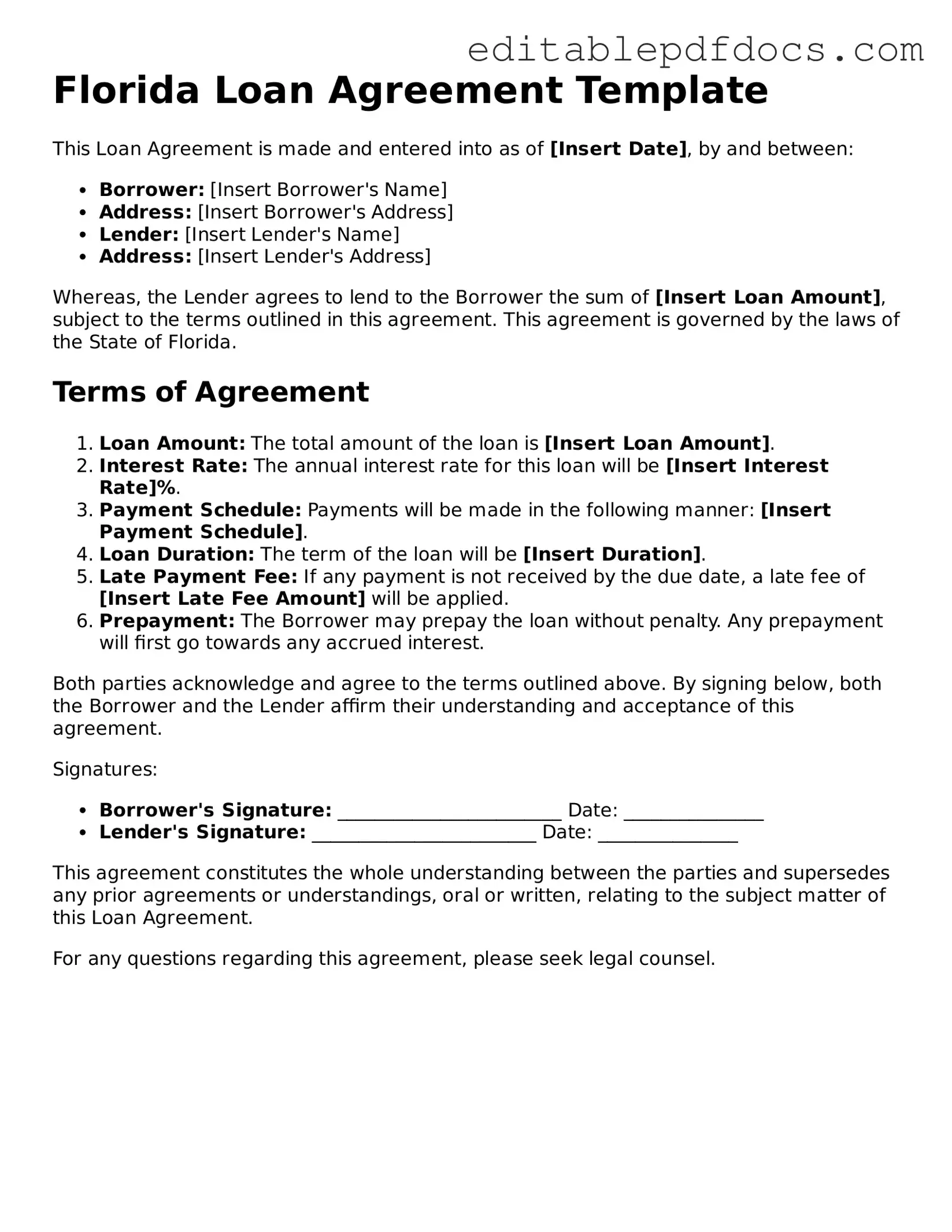When considering financial transactions in Florida, understanding the Florida Loan Agreement form is essential for both lenders and borrowers. This document serves as a binding contract that outlines the terms and conditions of a loan, ensuring that all parties are on the same page regarding repayment schedules, interest rates, and the total loan amount. Key components of the form include the identification of the parties involved, the purpose of the loan, and the specific obligations each party must fulfill. Additionally, it often details the consequences of default, which can protect lenders while providing borrowers with a clear understanding of their responsibilities. The form may also address collateral requirements, allowing lenders to secure their investment, and stipulate any fees associated with the loan. By grasping these major aspects, individuals can navigate the complexities of borrowing and lending more confidently in Florida's financial landscape.
